Heads up, HR: Your employees are using urgent care and specialists for basic care

Here at One Medical, we talk a lot about how access to primary care is critical for reducing healthcare costs. When your employees can’t get in to see a primary care doctor, they make more costly trips to the ER and urgent care. They spend more time in the hospital. And self-referral to specialists goes way up.
But just how often is this happening?
One Medical worked with SurveyMonkey to poll over 1,500 professionals nationwide about how they access care. The study shows that even people who have a primary care doctor are often using urgent care, specialists, or the ER to take care of basic medical needs. We also found that people who don’t have a regular doctor are using these channels even more heavily.
“Primary care is the lowest cost channel for care, but employees who can’t get care when they need it are heading to higher-cost urgent care centers or specialists,” said Sandeep Acharya, VP of Growth at One Medical. “This is costing employers a lot of money they really don’t need to spend.”
Here are the key findings of our study:
1. People who have a primary care doctor can’t always get in to see them.
While most respondents (80 percent) said they have a primary care provider, 59 percent of this group said they can’t always get in to see a doctor on the same day. More than one-third (37 percent) also said their doctor doesn’t provide any care outside of regular office hours.
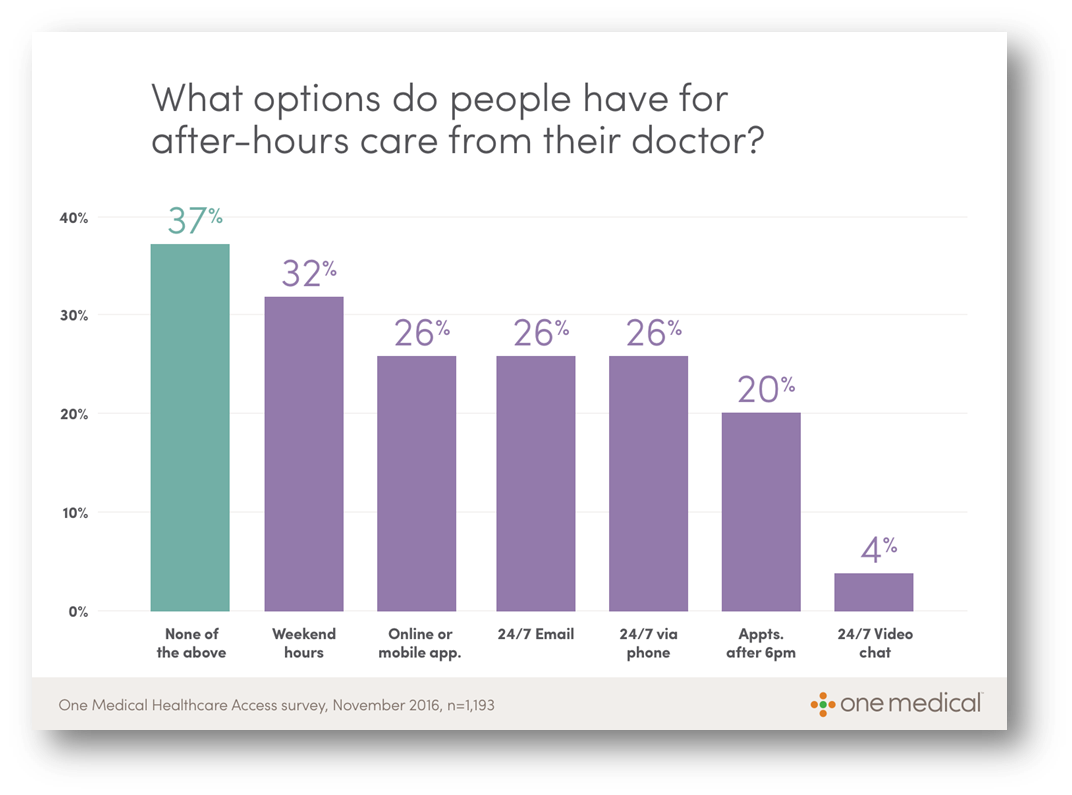
2. People are using higher-cost urgent care and the ER as a back-up when they can’t get in to see their doctor.
With few options for care outside of the office and no guarantee of same-day appointments, many people are using urgent care, the ER, and specialists as their back-up plan.
61 percent said they had gone to urgent care when they couldn’t get an appointment or needed care outside of regular office hours, and 38 percent said they had gone to the ER. 18 percent said they had gone directly to a specialist because their PCP wasn’t available.
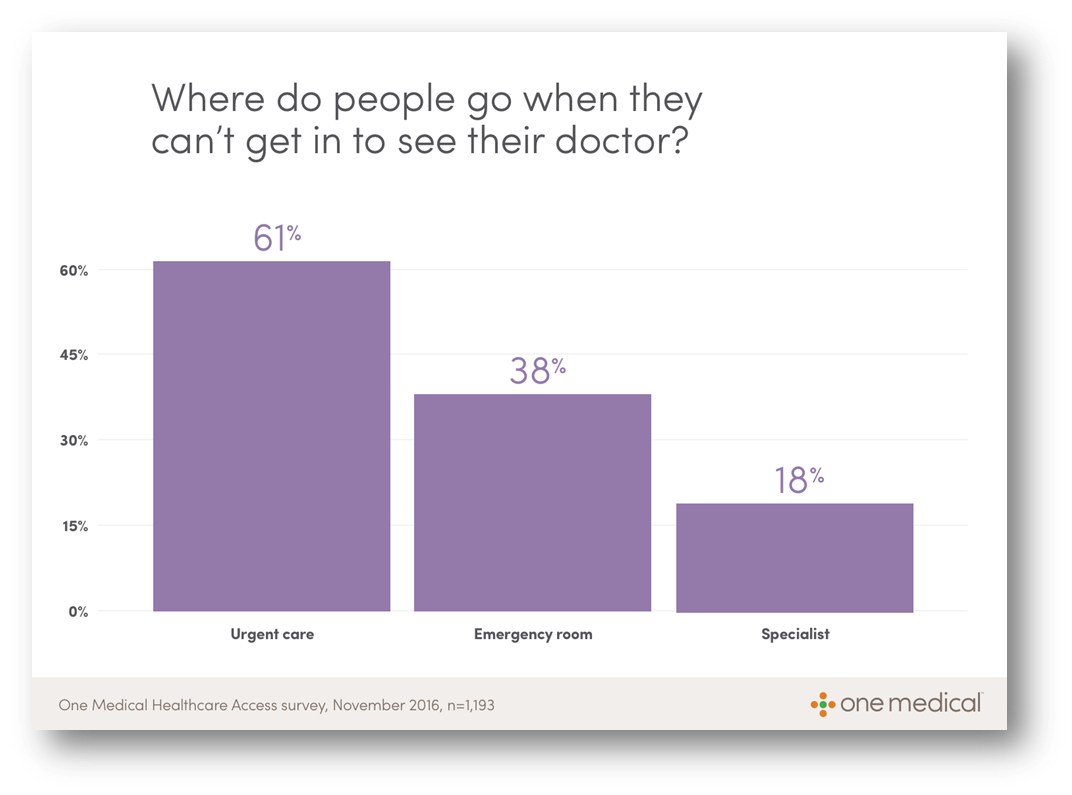
3. Many people are also using urgent care and specialists because they think they don’t need a primary care provider.
Of the people surveyed, 20 percent said they don’t have a primary care provider or group. When asked why, a significant number said they don’t believe they need one – 30 percent of people say they don’t ever get sick, and 18 percent say it’s just easier to go to urgent care. 12 percent said they just go directly to a specialist.
Others simply can’t be bothered to find a doctor, preferring instead to wait until the need arises. 16 percent of respondents said they haven’t had time to find one, and 9 percent say it’s too big of a hassle.
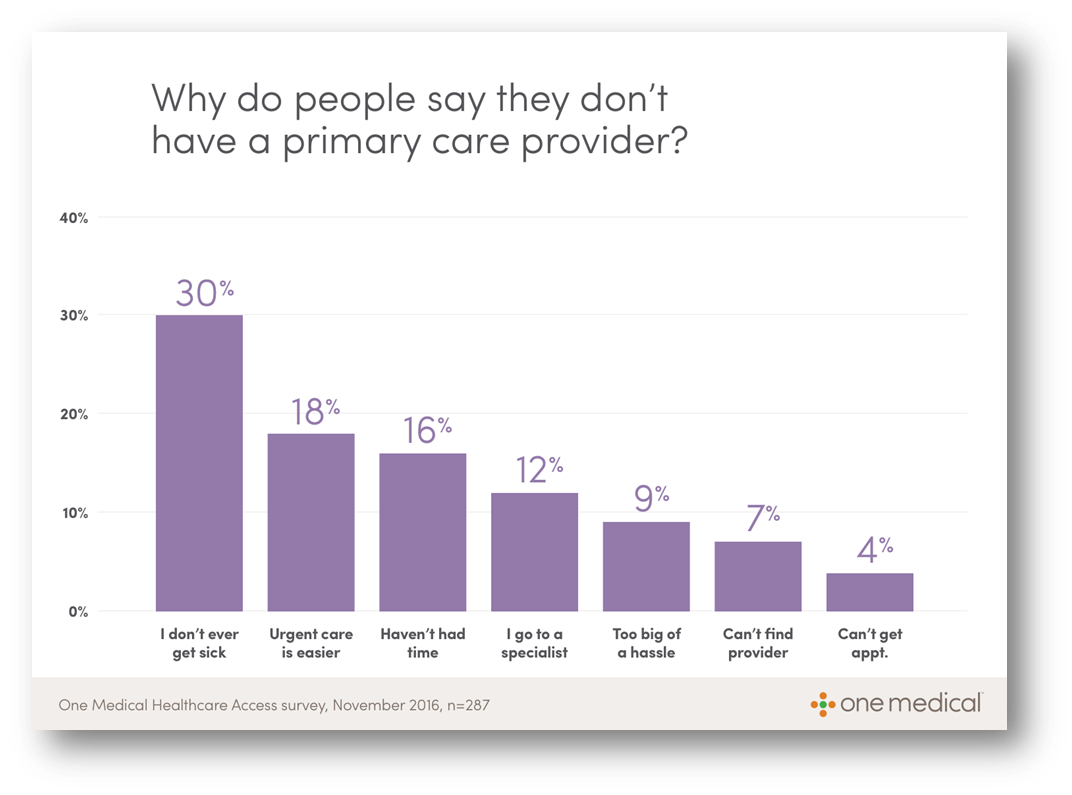
4. People who don’t have a primary care provider are going to urgent care clinics, specialists, and the ER to take care of basic medical needs.
The study shows that people who don’t have a primary care doctor are using urgent care to deal with minor issues, including ones that may not even require an office visit. 27 percent said they’d been to the urgent care for cold and flu-related issues; 26 percent for minor injuries; 9 percent for skin issues; and 9 percent for UTIs.
Specialists are also a popular go-to option for many of those without a regular primary care provider, according to the study: 43 percent of respondents said they had been to a specialist such as a dermatologist or allergist for basic, routine care.
And although the ER is generally thought of as a last-resort channel for care, 20 percent of respondents said they had been to the ER for a non-emergency issue.
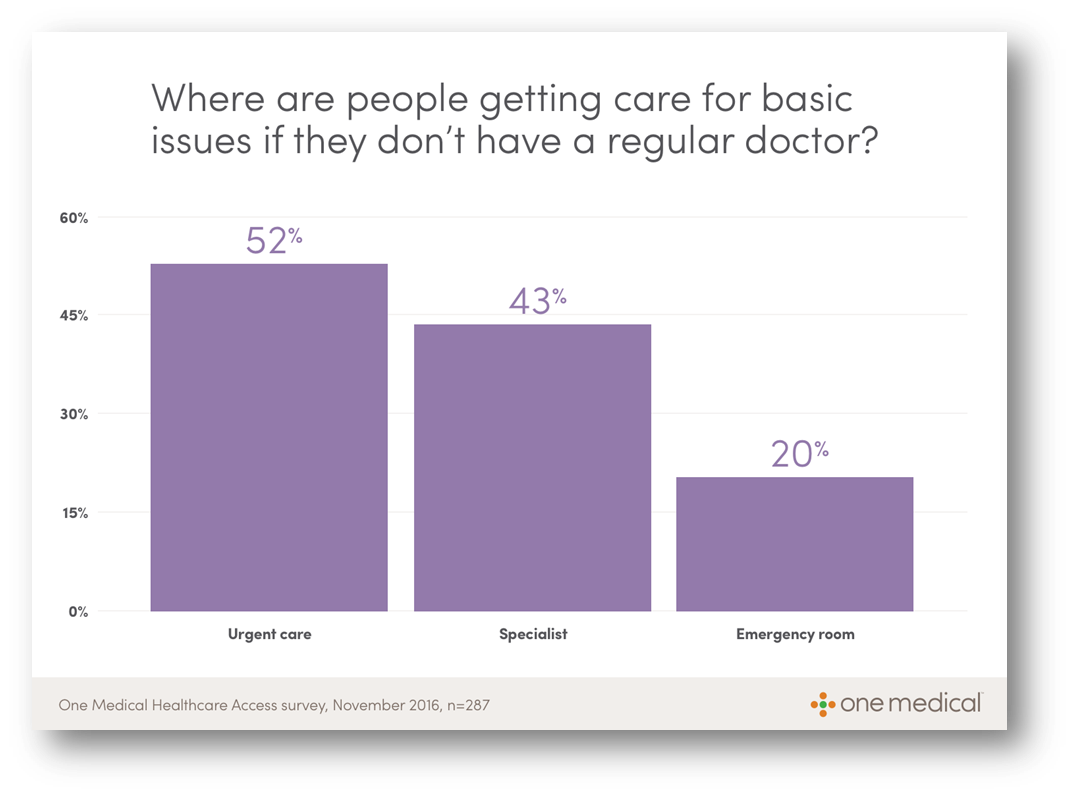
5. Standalone telemedicine services aren’t bridging the care gap outside of office hours.
According to Willis Towers Watson and the National Business Group on Health, 46 percent of companies are offering telemedicine, but utilization remains low*. According to our survey, just 6 percent of people say they have ever used a telemedicine service.
Trust and familiarity may be part of the issue: 53 percent of people said they would be more likely to use a telemedicine service if it were offered by their health care provider.
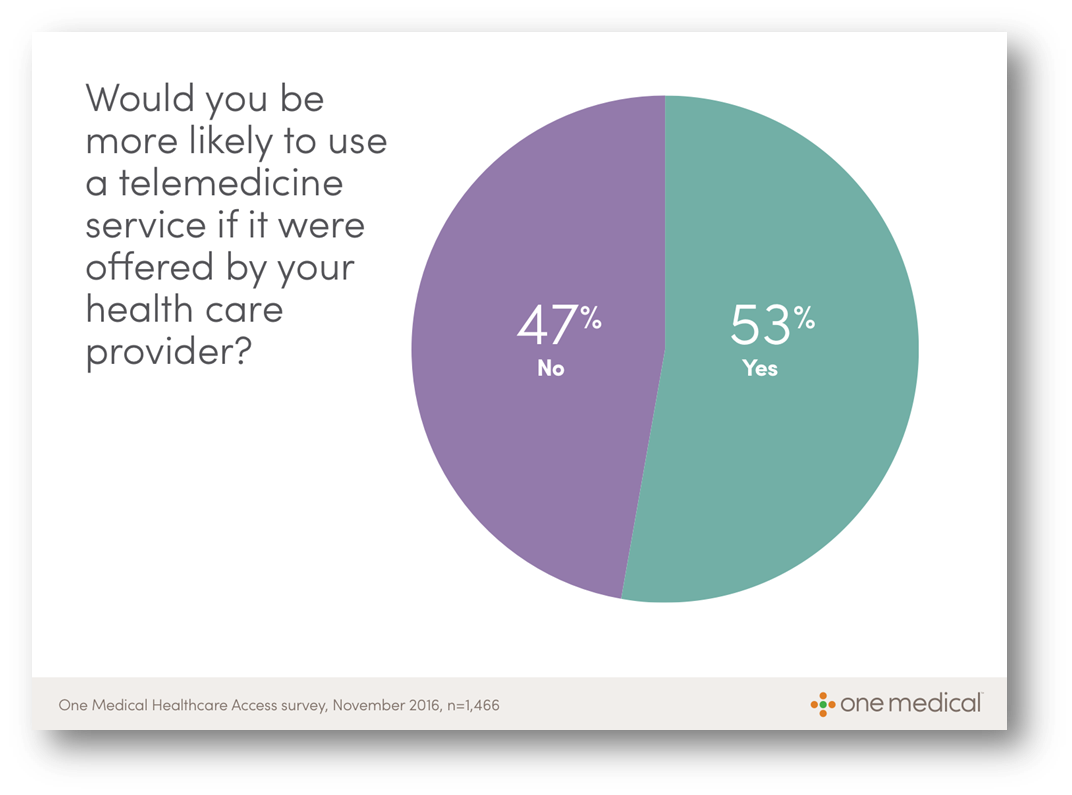
“Smart companies are now focusing on giving employees better access to primary care as a way to decrease their health care costs, reduce their employees’ time away from work, and bolster the overall health of their team,” added Acharya. “Our customers see an average of four to five percent reduction in health care costs, with 39 percent fewer ER visits.”
Visit www.onemedical.com/enterprise to learn more about One Medical’s near-site, on-site, and telemedicine solutions for primary care access.
Survey Methodology
One Medical worked with SurveyMonkey to survey over 1,500 full-time professionals across the U.S. regarding their use of different health care options. HMO and One Medical members were excluded from the survey. Survey responses were fielded between October 23 – November 21, 2016. Respondents ranged in age from 18 to over 60. 55 percent of respondents were women; 45 percent were men.
*2015 Willis Towers Watson/NBGH Best Practices in Health Care Employer Survey
The One Medical blog is published by One Medical, a national, modern primary care practice pairing 24/7 virtual care services with inviting and convenient in-person care at over 100 locations across the U.S. One Medical is on a mission to transform health care for all through a human-centered, technology-powered approach to caring for people at every stage of life.
Any general advice posted on our blog, website, or app is for informational purposes only and is not intended to replace or substitute for any medical or other advice. 1Life Healthcare, Inc. and the One Medical entities make no representations or warranties and expressly disclaim any and all liability concerning any treatment, action by, or effect on any person following the general information offered or provided within or through the blog, website, or app. If you have specific concerns or a situation arises in which you require medical advice, you should consult with an appropriately trained and qualified medical services provider.
